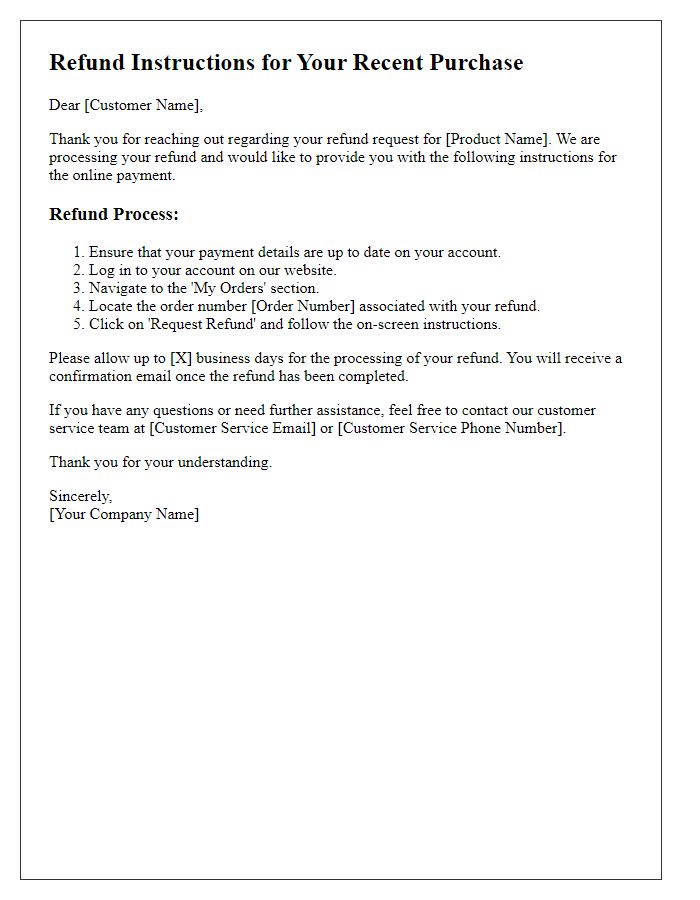Are you looking to streamline your online payment process? Crafting a clear and concise payment instruction letter can make all the difference in ensuring a smooth transaction experience. Whether you're a business reaching out to clients or a customer providing payment details, having an effective template can save time and reduce misunderstandings. Ready to dive into essential tips for creating your own payment instruction letter? Let's explore!

Clear payment purpose and details
Online payment instructions can streamline transactions for both businesses and customers, emphasizing the clarity of purpose and specific payment details. Precise payment purpose indicates whether it's for services rendered or product purchases, while detailed information includes invoice number (like 123456), transaction amount (e.g., $99.99), and payment method (credit card, PayPal). Clear identifiers such as customer ID or order number facilitate easy tracking and reconciliation. Timely instructions, including the payment deadline (e.g., within 14 days), ensure efficient processing and avoid delays. Overall, well-articulated payment instructions foster trust and improve customer satisfaction.
Accurate recipient information
Accurate recipient information is crucial for successful online payments, especially in transactions involving financial institutions and e-commerce platforms. Essential details include the recipient's full name, matching the name on their bank account, correct account number for bank transfers, and precise email address for digital wallets. Payment systems often require additional identifiers, such as phone numbers or unique transaction IDs, to ensure the funds are directed to the intended beneficiary. Errors in this information can lead to transaction failures or misallocation of funds, which may result in delays and complications in resolving payment issues. Providing accurate data minimizes risks and ensures a smooth financial exchange.
Instructions for payment method
To ensure a seamless online payment transaction, carefully follow the provided instructions. Begin by accessing the secure payment portal, typically hosted on encryption-enabled websites ensuring the protection of personal and financial information. Next, select the preferred payment method: credit card, debit card, or digital wallet. For credit and debit card transactions, input vital information including a 16-digit card number, expiration date, and the CVV code located on the back of the card. If utilizing a digital wallet such as PayPal or Apple Pay, log in to the respective account and confirm the transaction amount. A final step involves reviewing the payment details for accuracy before selecting the confirm button. Post-completion, an email receipt will be sent to the registered address, acting as confirmation of the successful payment.
Security and confirmation protocols
Online payment systems require rigorous security and confirmation protocols to safeguard transactions. Encryption technology, such as SSL (Secure Sockets Layer), protects sensitive data during transmission, ensuring that credit card information and personal details remain confidential. Multi-factor authentication (MFA) mechanisms, often involving one-time passcodes sent via SMS or email, add an extra layer of security, verifying user identity before processing payments. Additionally, real-time transaction alerts notify users of any activity, helping to detect potential fraud immediately. Compliance with standards set by regulatory bodies, such as PCI DSS (Payment Card Industry Data Security Standard), further enhances the security framework, ensuring that payment processors adhere to strict guidelines to protect consumer data in digital marketplaces.
Contact information for inquiries
Online payment instructions require clear communication for effective transaction processing. Users must provide their contact information, which typically includes an email address and phone number, for inquiries regarding payment issues or transaction confirmations. Information such as customer service hours (often 9 AM to 5 PM, Monday to Friday) can aid users in knowing the best time to reach support. Additionally, specifying response times (usually within 24 to 48 hours) can help manage expectations. Secure payment processing platforms often highlight their commitment to customer privacy and data protection, emphasizing the importance of keeping sensitive information confidential during communication.
Letter Template For Online Payment Instruction Samples
Letter template of online payment instructions for recurring subscriptions.













Comments